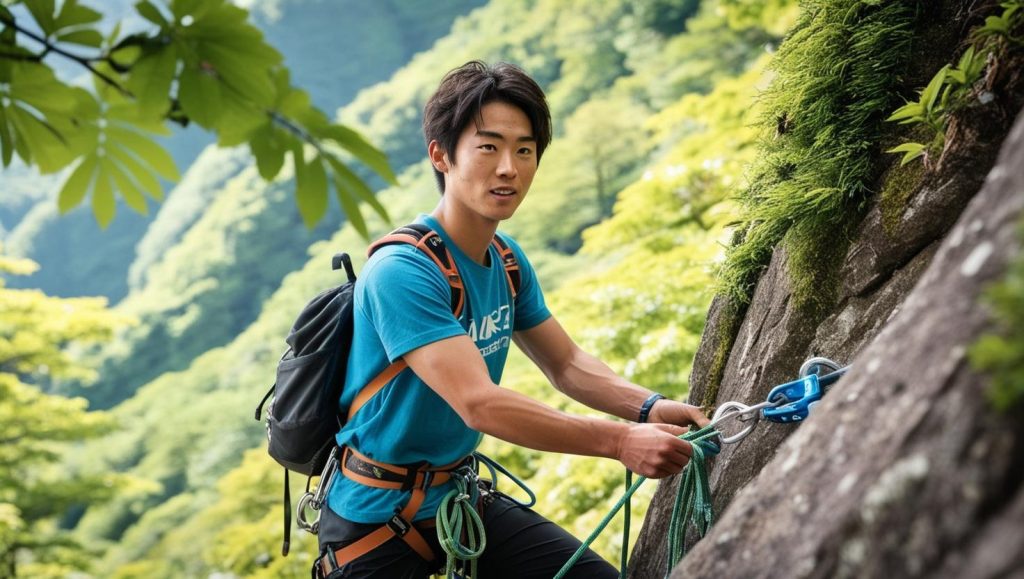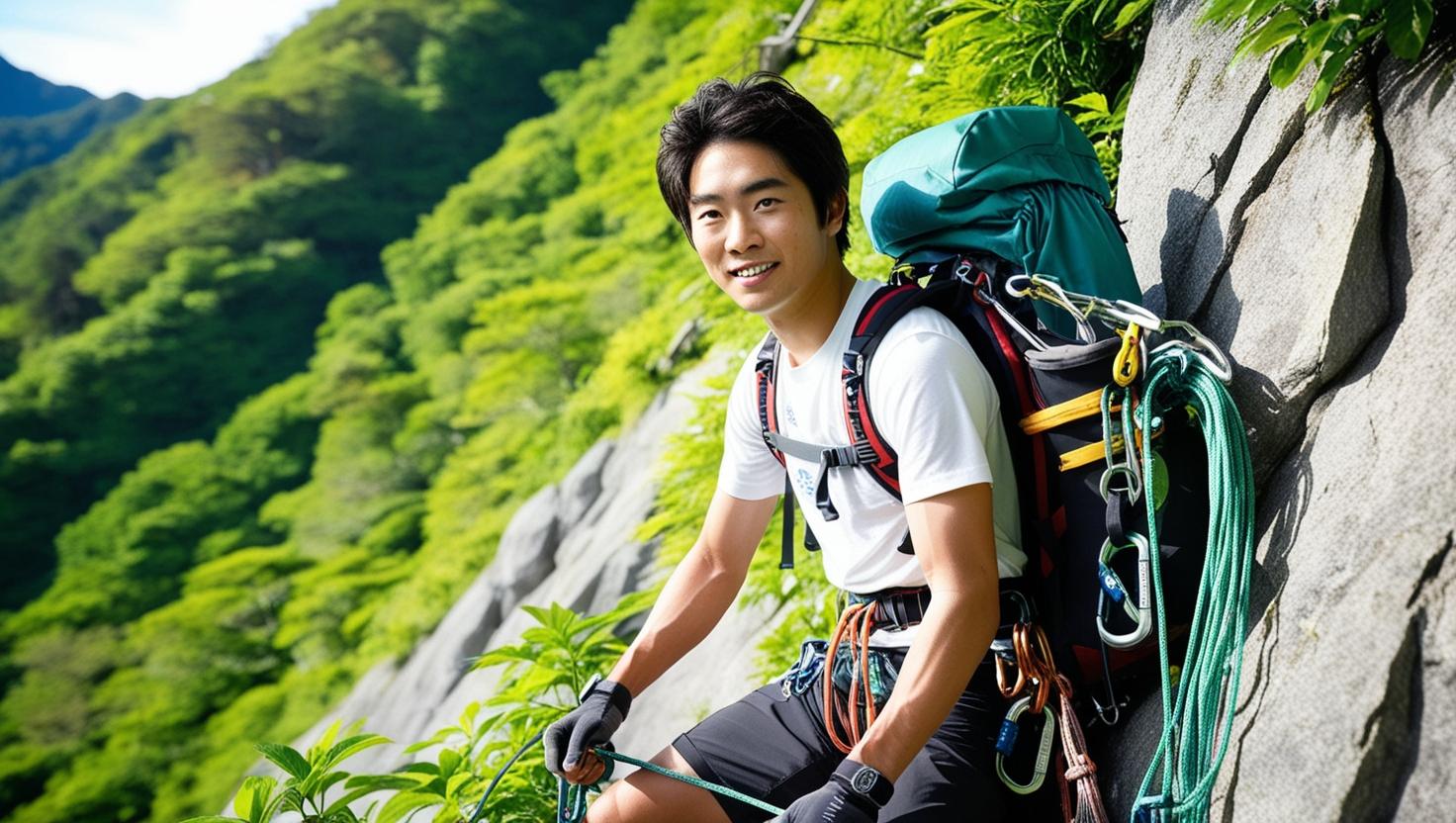Mountain climbing is a challenging and exciting activity, but also full of risks. The success of the climb, in addition to physical and mental endurance, depends greatly on the right equipment. This article discusses men's mountaineering equipment, focusing on the balance between safety and comfort. Remember, "it is better to bring and not need, than need and not bring" is the main principle in preparing men's mountaineering equipment.
When planning a mountain climb, one of the important things to consider is choosing the right men's mountain gear. For men, choosing the right men's mountain gear is the key to enjoying a safe and comfortable trip. In this article, we will discuss some important types of men's mountain gear and how to choose wisely.
Clothes
Hiking clothing should keep you warm when it's cold, dry when it's wet, and comfortable when you're active. Effective layers use a three-layer system:
Base Layer: The main function is to absorb sweat and keep the body dry. Choose synthetic materials such as polyester or merino wool, avoid cotton because it dries slowly and easily makes the body cold when wet. T-shirts and underwear made from this material are the right choice. Also consider thermal shirts for extreme temperatures.
Lapisan Tengah (Mid Layer): Serves as insulation to keep warm. Fleece jackets or sweaters made of synthetic fleece are popular choices. Choose one that is lightweight and easy to compress so it doesn't take up much space in your backpack. The thickness of the middle layer is adjusted to the predicted temperature.
Lapisan Luar (Outer Layer): Serves as protection from rain, wind, and snow. Waterproof and windproof jackets and pants are a must. Choose a jacket that has a hood and good air circulation to prevent overheating. Gore-Tex or similar materials are reliable choices, but there are many alternatives at more affordable prices with good quality.
In addition to the three main layers, other equipment to consider:
Socks: Choose socks made of wool or synthetic materials that absorb sweat well. Avoid cotton. It's a good idea to bring several pairs to change. Special hiking socks are designed to prevent chafing and provide extra cushioning.
Gloves: It is important to protect your hands from cold and injury. Choose gloves that are appropriate for the weather conditions, from thin gloves for warm weather to thick, waterproof gloves for cold weather.
Headwear: A hat or bandana to protect a man's head from the sun and keep warm. A buff (a versatile head covering) is very practical.

Climbing Equipment
In addition to shoes, bags, and clothing, there are some additional men's mountain equipment that are important to bring when climbing a mountain. Some of these include a flashlight, compass and map, first aid kit, cooking utensils and food supplies, and safety ropes and carabiners.
Backpack: Choose a backpack with a capacity that suits the duration of the hike and the amount of equipment carried. Pay attention to comfort and a good load support system so that the load feels light on the back. A size of 50-70 liters is generally suitable for multi-day hikes.
Mountain Shoes: It is essential for comfort and safety. Choose shoes that fit your feet well, are waterproof, and have good grip. Break in your shoes before climbing to avoid blisters.
Trekking Sticks: Helps reduce stress on the knees and feet, and improves balance. Choose a stick that is lightweight, durable, and easy to adjust in length.
Headlamp/Senter: It is very important for night climbing. Choose one with long battery life and bright light.
Navigation Equipment: A compass and map are essential, especially in difficult terrain. Learn how to use them before your hike. A GPS or navigation app on your smartphone can also help, but make sure the battery is fully charged and there is signal.
Safety Equipment
P3K (first aid in an accident): Fill the first aid kit with complete supplies, including bandages, plasters, painkillers, diarrhea medicine, etc. Learn the basics of first aid before climbing.
Knife / Multitool: Very useful for a variety of men's needs, from cutting rope to repairing equipment.
Scarf / Buff: Multifunctional, can be used as a head cover, neck cover, or even a men's mask.
Raincoat: In addition to a waterproof jacket, a separate raincoat is essential to protect a man's entire body from heavy rain.
Rope / Paracord: Useful for various men's needs, such as tying things up or as an emergency aid.
Whistle: For men to ask for help in case of emergency.
Matches: As a source of fire for cooking food, keeping warm, or in an emergency. Make sure to bring a waterproof gas lighter or lighter. It is safer to bring a spare.
Plastic Bag: For storing wet clothes or men's items that need to be kept dry.
Other Equipment
Sunscreen: Sunscreen with high SPF is important to protect men's skin from the sun. Also use sunglasses to protect your eyes.
Lip balm: Don't forget to protect men's lips with lip balm that contains SPF.
Drinking Water: Bring enough drinking water, or a water filter/purifier.
Food: Bring nutritious, easy-to-carry snacks, such as energy bars, chocolate, and dried fruit.
Waist Bag / Daypack: To carry men's items needed during the climb, such as cameras, snacks, and drinking water.
Mobile phones: For emergency communication, but don't rely too much on it because the signal is not always available. Make sure the battery is fully charged and bring a power bank.
Important Documents: Photocopy of KTP, SIM, and other important documents.
Additional Tips
Get acquainted with the field: Study the hiking route and weather conditions before leaving.
Join a group: Climbing with friends or a group is safer.
Tell us about the climbing plan: Tell others about your hiking plans, including the route and estimated time.
Perform fixture maintenance: Clean and maintain men's gear after climbing to maintain its quality and durability.
Physical exercise: Sufficient physical exercise before climbing is very important to maintain men's endurance.
Conclusion
Mountain climbing is an activity that requires careful preparation. By choosing and using the right men's mountain gear, you can minimize the risk and enjoy the beauty of nature safely and comfortably. Remember, safety is always the top priority. Choosing men's mountain gear is a process that requires careful consideration. Each component must be balanced between safety and comfort.
By understanding the importance of the right men's mountain gear, every man can explore the beauty of nature more safely and comfortably. Investing in quality men's mountaineering gear isn't just about style, it's also about prioritizing personal safety and maximizing the climbing experience. With careful preparation and appropriate equipment, mountain challenges will feel lighter and good memories will be created without sacrificing safety and comfort. Happy climbing!















